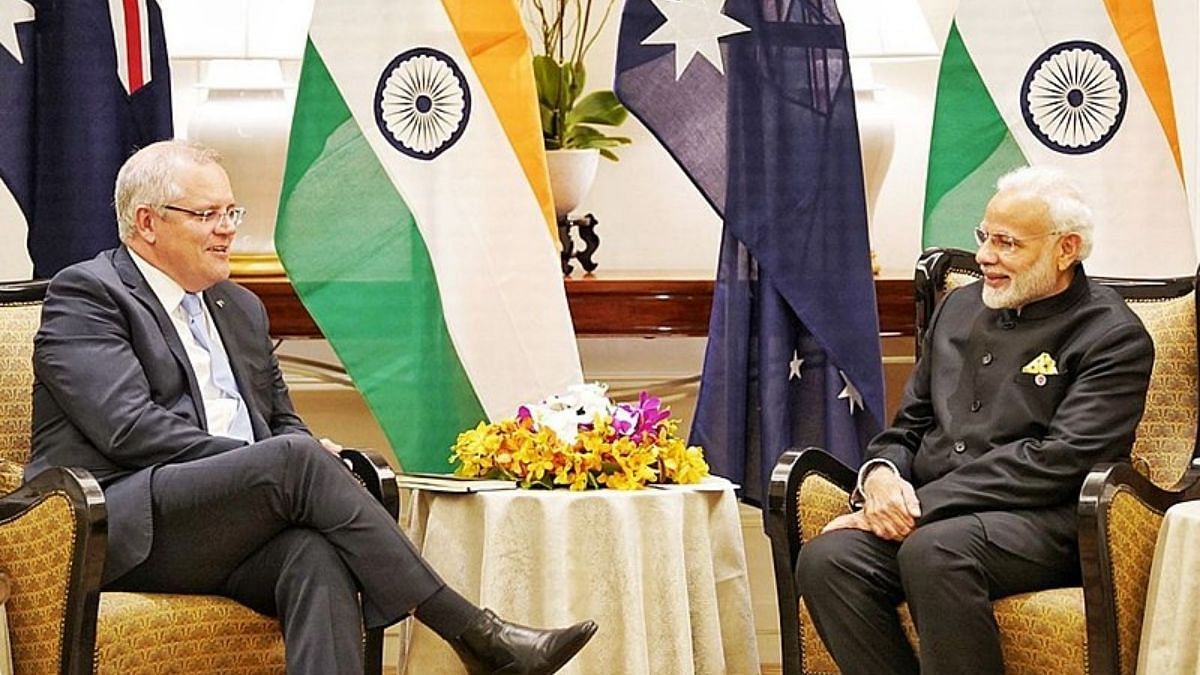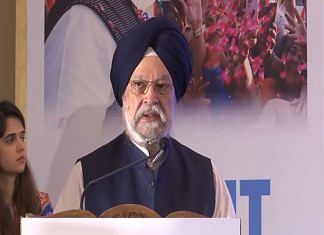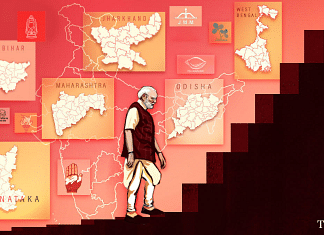Thank you dear subscribers, we are overwhelmed with your response.
Your Turn is a unique section from ThePrint featuring points of view from its subscribers. If you are a subscriber, have a point of view, please send it to us. If not, do subscribe here: https://theprint.in/
Australia – India Economic Cooperation and Trade Agreement: A treaty of substance
As is the case in all trade treaties, there are areas of specific agreement and then an indicative pathway into other areas. Implicit in all agreements between two or more countries are two essential drivers, namely national interest and political intent.
In our region, the big bang was the Regional Comprehensive Economic Partnership (RCEP) in Nov 2020 and more recently, in early April 2022, the Australia-India Economic Cooperation and Trade Agreement (ECTA).
As a quick recap, the RCEP was signed by 15 countries i.e. 10 ASEAN nations + China, Japan, S. Korea, NZ, and Australia. It is the world’s largest trading bloc. India opted to follow bilateral trade agreement route (Aus-Ind ECTA being one). However, the RCEP being the world’s largest trading bloc i.e., bigger than the EU or the Americas, some comparison cannot be avoided.
Contents of trade agreement are complex and with the rapid acceleration of digitization, the ‘contentious’ issues in the negotiation process too have evolved. While agreement on tariffs and Intellectual property are still important, the scope has widened.
The ECTA aims to facilitate a mix of broad issues and some at operational level viz Mobile number portability, affordable international roaming (big help to professional services, tourism), paperless trade thru electronic certification to state a few. Indeed, it has been 10 years in the making (not imputing this long-time frame is justifiable), but kudos to Ministers Goyal and Tehan for a splendid delivery.
The treaty has moved the needle to value creation. Conventional manufacturing is a big part of value creation but there are other impactful elements as well. The axiomatic statement of Australia having vast reserves of raw materials/minerals and India with skilled and inexpensive labour is well known. A review of the various documents under the ECTA makes it clear that the treaty goes beyond the banner statement and aims to improve the levers of value creation, both in India and Australia. The treaty looks at input values and corrals to ‘value creation’ ie a baseline for a win-win situation.
India wishes to build-up its value creation capacity and capability. Clearly, for a growing economy of that size and availability of skilled and semiskilled work force, it is quite clear that local value creation has room to grow, not just to meet the local demand but also be more participant in the global value chain. To achieve this, India needs the right input-values, raise quality threshold of products/ services, and fill the gaps in its professional services. Australia on the other hand, needs increased share in the value chain (move up from raw material to input values) and offer quality professional services including the pressing matter of environmentally friendly initiatives.
While the treaty addresses many broad issues, the three key pivotal levers are:
- Path for Australia and India to access service sector.
Both countries have agreed to implement a framework to facilitate the mutual recognition of qualifications, licensing, and registration procedures between professional services bodies. This will squarely put the onus on professional bodies to agree on pathways to mutual recognition. This is a vicarious approach but, in my understanding, this is more fundamental and goes to shake the status quo.
To look at it a bit differently and examine the migration trend of high-net worth individuals i.e. those who have a net worth of at least USD1 million or more assets. While Covid disrupted the migration pattern in the last two years, the country that gained the most millionaires for the fifth consecutive until 2019 is Australia. This inward traffic brings in skills, qualifications, and influence – all the key elements for a strong services sector in any economy in addition to availability of capital.
Here, the treaty may seem to do a catch-up with the RCEP, but the specifics in ECTA are more structural
2. Rules of Origin and value-add.
Defines what is to be treated as originating from Australia or India. A Qualifying value content (QVC) of at least 35% of the FOB value is a recognition of the path of a collaborative value creation. It recognises the current state of a globally dispersed supply chain/ value chain.
When compared with the RCEP, this appears to be more specific and executable
3. Enhanced mobility between the two countries based on transparent visa pathways.
This is a critical enabler to the services sector and to the wider objective of value creation and should support a range of Australian and Indian skilled service providers, investors, and business visitor thus facilitating investment.
This is a catch-up with the RECEP bloc. However, this is likely to be the catalyst that the first 2 levers stated earlier must have, to generate a significantly accretive outcome to India and Australia.
Also read: SubscriberWrites: India’s ‘system’ has failed but illusion of leadership lingers
These pieces are being published as they have been received – they have not been edited/fact-checked by ThePrint.












COMMENTS